Are you interested in becoming an SEO writer? Or do you have a small business that would benefit from organic search traffic?
SEO writing is a free way to significantly increase traffic to a website or ecommerce shop.
This article shows you how to write a blog article to rank high on Google.
What is SEO Writing?
SEO writing is the art of creating content specifically to rank high in search engine results in order to drive traffic to your webpage.
Effective writing for SEO includes 3 crucial elements:
- keyword selection
- content quality
- on-page optimization
Keyword Research and Selection
SEO writing for beginners starts with keyword research.
Keyword research involves identifying relevant terms for your niche that people are actively searching for online.
These terms should be incorporated throughout your article because it helps search engines understand your content’s relevance to user queries. More on that soon…
You can start your keyword search on Google.
For instance, if the general topic is “shipping containers,” simply search it on Google to see what words autofill the suggestions.
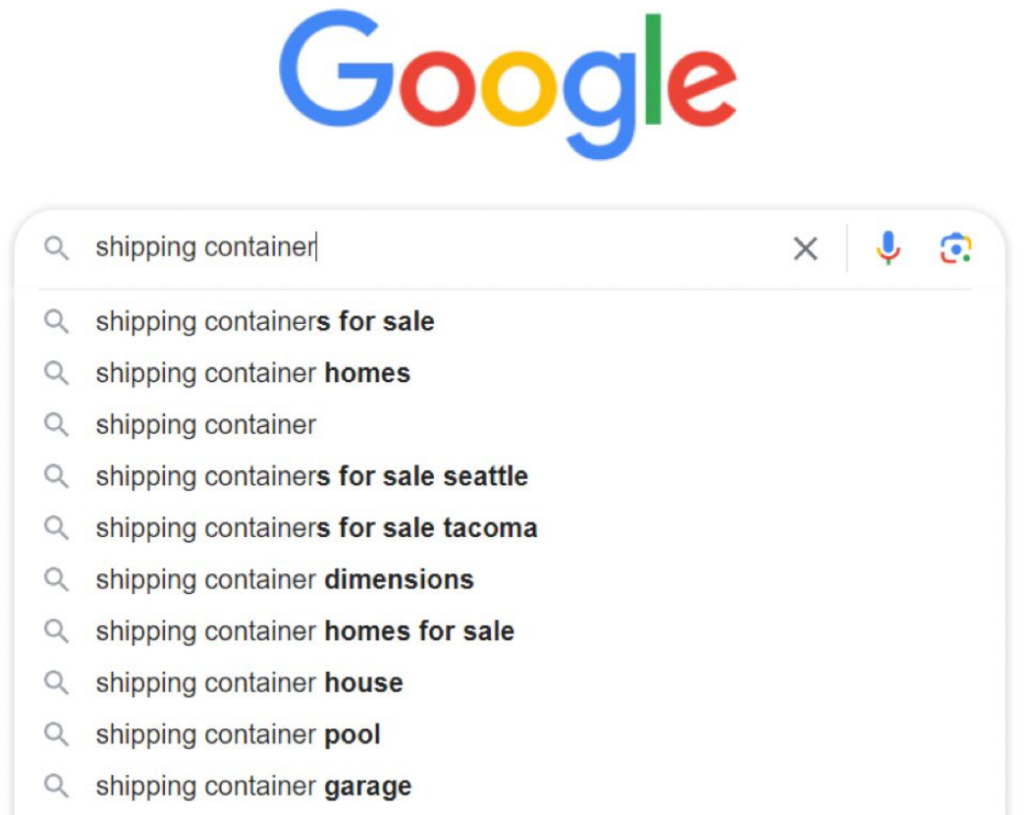
Google’s autofill results are the most searched terms related to that topic.
That’s usually a good place to start because you want to target keywords with lots of search volume.
However, the top searched terms are often very competitive to rank high for.
So if you have a newer website, it may be best to target “long-tail” keywords (aka longer phrases) because you don’t have enough authority with Google yet to rank for the top keywords.
For example, let’s expand the topic and SEO keyword to “shipping container garage” and see what autofills.
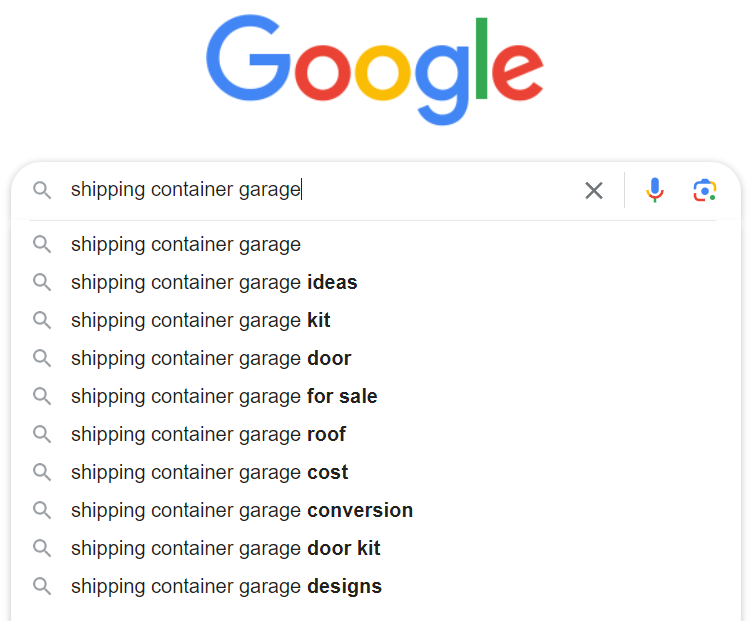
A good long-tail keyword to target may be “shipping container garage ideas.”
This is a real-world example from an SEO writing job that we did for a client. Our article currently ranks at the top of Google search for “shipping container garage.”
Sometimes you need more data – like the exact search volume and competitiveness – to determine if a keyword is a realistic target.
There are some great keyword research tools that speed up this process and give much more data. SEMRush and Infinite Suggest are useful. Both offer some free usage.
Another way to find good topics for SEO writing is to see what common questions your target audience is asking.
Google usually provides popular questions for search terms.
Here are Google’s questions when searching “shipping container garage”:

Not great. But they give some insight into what people are asking.
You can search for other common questions on Quora, Wikipedia or Reddit.
TIP: Once you select the keywords for your article, search them on Google. Click on the top results to review the quality of their content.
If you can make better content for that topic, you have a good chance of eventually overtaking them in the rankings – even if you have a newer website.
How To Write SEO Content That Ranks On Google
The biggest secret to ranking high on Google is to create the absolute best content on the Internet for your topic. Period!
There is no shortcut! Great content is necessary to rank high!
A 500-word article with no soul, written by ChatGPT, with a single stock image may be worse for SEO than having zero content.
Google prioritizes high-quality content that provides genuine value to readers.
As such, SEO writing must be accurate AND consumable.
Your SEO Article Must…
- satisfy user needs
- demonstrate expertise in your niche
- be easy to consume
- provide attractive images and graphics
If you hit all four points with your keywords better than your competitors, you will eventually rank higher on search engines.
For example, someone searching “shipping container garage” probably wants to see images to get ideas from.
If you only provide explanations without images, you will not satisfy the reader’s needs.
You want to use simple, accurate language because that demonstrates expertise. Making content easy to consume is mostly about writing style and formatting.
Short paragraphs of 1-3 sentences are best because large blocks of text are difficult to read on mobile devices.
Translation: big blocks of text are a bad user experience.
What’s The Best Article Length for SEO?
How many words should an article be to rank well on Google?
The average word count of top ranked articles on Google is around 1500 words according to recent data research by the Marketing School podcast.
They said it used to be around 2500 words on average.
It likely dropped because we all hated reading a novel before actually getting to the recipe we wanted 😉
This means Google downranks fluff content because users don’t like it.
So avoid fluff. Make every sentence valuable. Aim for 1500+ words.
On-Page SEO For Blog Articles
Once you have your article topic and keywords, it’s time to write and optimize your article for search engines AND user experience.
On-page SEO involves proper:
- Keyword placement
- Content formatting
- Meta tags and descriptions
- Internal and external linking
Keyword Placement
Spamming your primary keyword in the content will not help you rank high on Google.
In fact, Google will down-rank spammy articles.
Instead, you want to strategically place your keyword (and a few derivatives of your keyword) a handful of times throughout your page.
At minimum, your primary keyword MUST appear in these 5 places:
- Title Tag in the browser tab
- Blog URL in the address bar
- Article title (H1 tag)
- Content body in the first 150 words
- Section subheading (H2 tag)
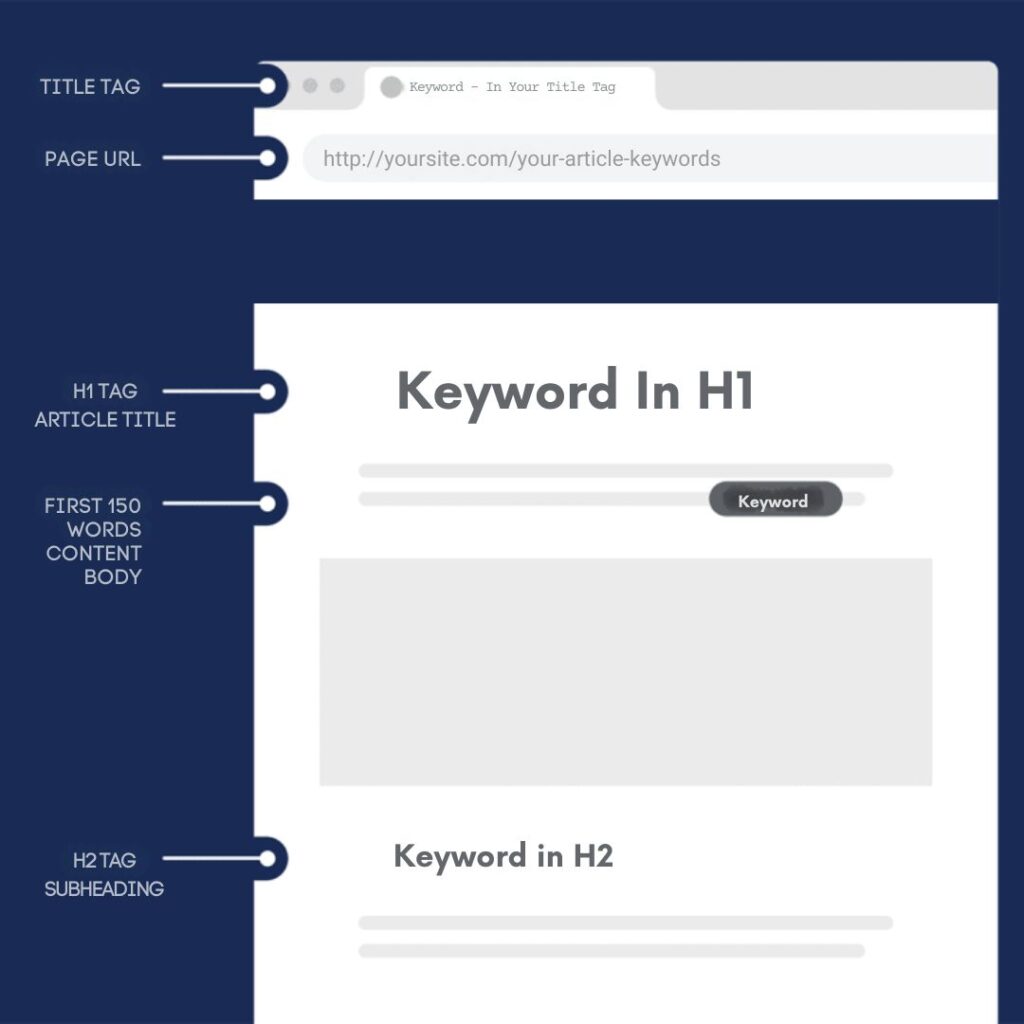
Placing the primary keyword in those five places alone is enough to rank well for the keywords.
Content Formatting
Proper content formatting helps with SEO because it helps user experience.
Most visitors skim an article before they decide to read further.
At a glance, your SEO article should appear to provide the information they’re seeking in an easily digestible way.
This includes bite-sized sections with compelling subheadings and interesting graphics.
Headings and subheadings: These identify different topics within the main topic to improve readability and structure your article logically. They also serve as an H2 to place keywords.
Images and multimedia: Enhance your content with visuals. Don’t forget to add alt text describing the image content. This helps search engines understand the image’s relevance and improves accessibility for visually impaired users.
Short paragraphs: Again, because most visitors use mobile devices these days, keep the paragraphs to 1-3 sentences long. Use bullet points wherever possible.
URL, Title Tags, and Meta Descriptions
If you are new to blogging and SEO writing, those terms may seem foreign.
But placing keywords in those areas is critical, as shown in the diagram above.
If you use WordPress, the Yoast plugin makes it really easy to fill out these sections with keywords.
URL: The URL is your website’s domain name plus the article slug.
EXAMPLE – www.yoursite.com/slug
You want the slug to contain your focus keywords and only the focus keywords. Don’t add unnecessary words.
EXAMPLE – www.yoursite.com/shipping-container-garage
Title Tags: These appear in search results and the page tab in your browser. They also directly influence click-through rates.
So include your target keyword naturally with an enticing headline.
See the example title tag below for the shipping container garage article.
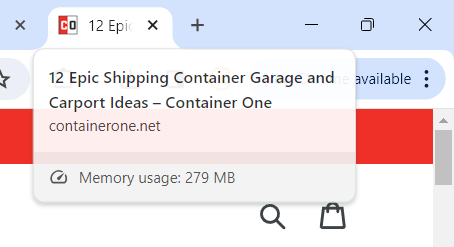
Meta Descriptions: Google Search Central explains “A meta description tag generally informs and interests users with a short, relevant summary of what a particular page is about. They are like a pitch that convinces the user that the page is exactly what they’re looking for.”

Here is a screenshot of this article for how to enter the meta description using Yoast:
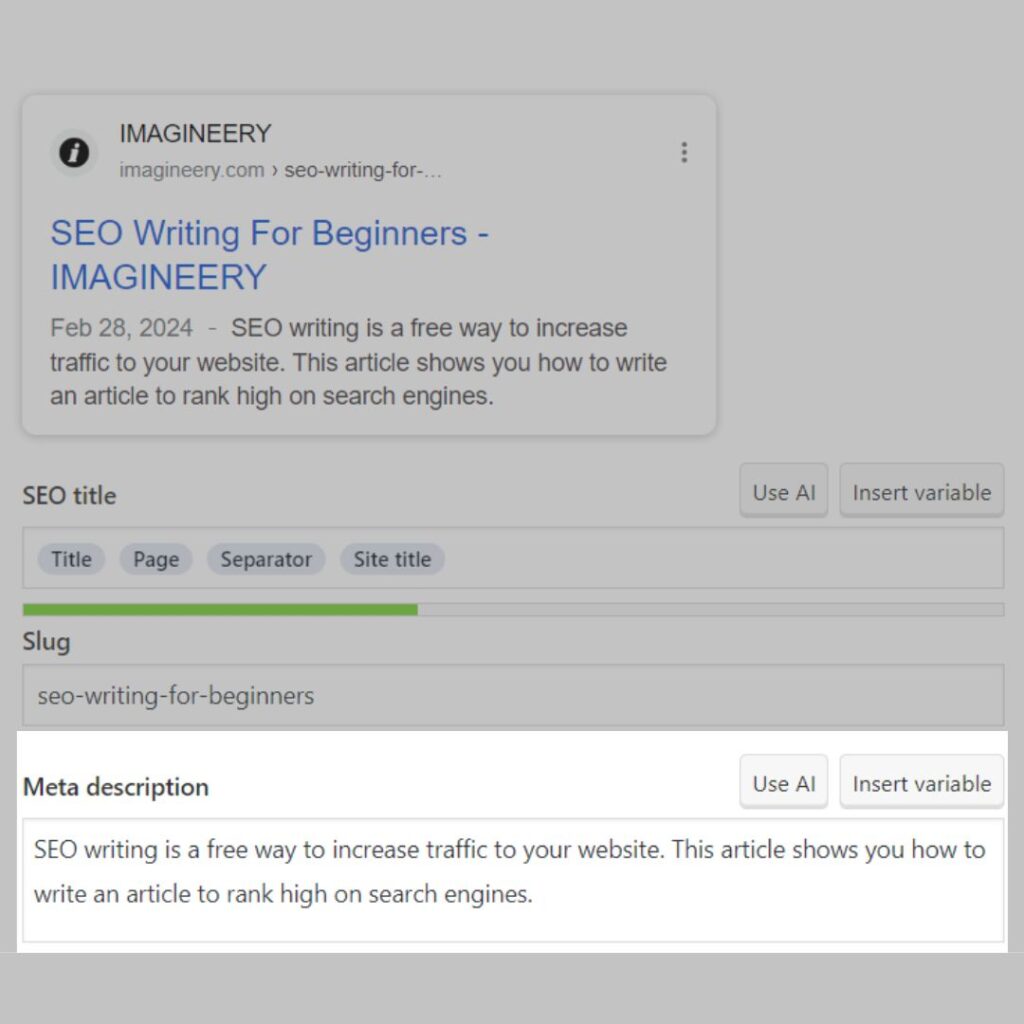
Internal and External Linking
The links in your content tell search engines a lot.
A blend of internal links and external links has proven to be most effective for SEO.
Remember…Google prioritizes content that provides genuine value to readers.
Therefore, users and Google like to see diverse links to high-quality sources.
If you only link to pages within your website, Google is less favorable because they view it as self-serving instead of satisfying the user’s query.
Internal Linking: Include 3-5 links to other pages on your website. Make sure that the links are embedded in anchor text containing the exact keywords for the destination pages.
External Linking: The best external links for brands who don’t want to promote competitors are public sites like Wikipedia, studies at .edu websites, .gov websites for statistics, and so on.
Remember, your content ultimately serves readers. Prioritize clear and concise writing, logical structure, and proper formatting. Ensure your article is mobile-friendly, as many users access information through smartphones and tablets. By focusing on both SEO elements and user experience, you create a well-rounded blog post with the potential to climb the Google search ladder.
20 Quick SEO Tips For Beginners
- Conduct keyword research: Identify relevant keywords and phrases to optimize your content and improve your search rankings.
- Optimize title tags and meta descriptions: Ensure your page titles and meta descriptions are clear, concise, and include your target keywords.
- Focus on quality content: Create engaging, informative, and shareable content that naturally incorporates your target keywords.
- Incorporate internal linking: Use internal links to guide users through your website and improve your site’s structure.
- Optimize images and videos: Use descriptive file names and alt tags to help search engines understand your visual content.
- Improve site speed: A fast-loading website is essential for a positive user experience and better search rankings.
- Utilize header tags: Use H1, H2, and H3 tags to structure your content and make it easier for search engines to understand.
- Build high-quality backlinks: Earn links from reputable websites to improve your domain authority and search rankings.
- Optimize for local search: Claim your Google My Business listing and optimize your website for local keywords.
- Focus on user experience: Ensure your website is easy to navigate and provides a seamless experience for users.
- Leverage social media: Share your content on social media platforms to increase visibility and drive traffic to your website.
- Monitor and track your SEO progress: Use tools like Google Analytics and Search Console to monitor your website’s performance and make data-driven decisions.
- Stay up-to-date with SEO trends: Keep an eye on industry developments and adjust your strategy as needed.
- Optimize for mobile: Ensure your website is mobile-friendly and responsive to cater to the growing number of mobile users.
- Focus on long-tail keywords: Target long-tail keywords to attract more qualified traffic and improve your conversion rates.
- Optimize for image search: Use descriptive file names, alt tags, and optimized image sizes to improve your visibility in image search results.
- Optimize for voice search: Create content that answers common questions and uses natural language to improve your chances of appearing in voice search results.
- Conduct a technical SEO audit: Regularly assess your website’s technical health to identify and fix any issues that may impact your search rankings.
- Focus on content relevance: Ensure your content is relevant to your target audience and provides value to help improve search rankings.
- Prioritize user intent: Understand the intent behind your target keywords and create content that meets the needs of your audience.
Imagineery Studio is a content marketing agency for small businesses. Contact us if you want captivating content that converts.